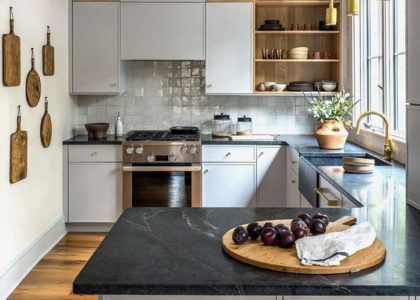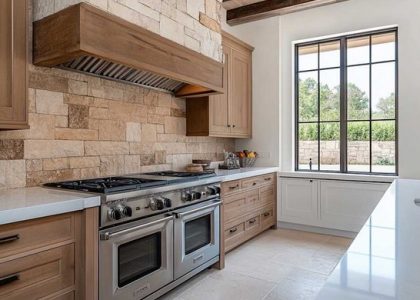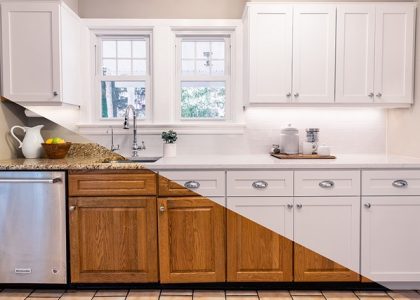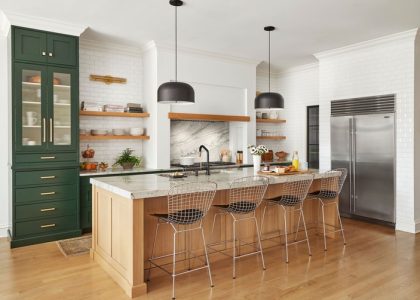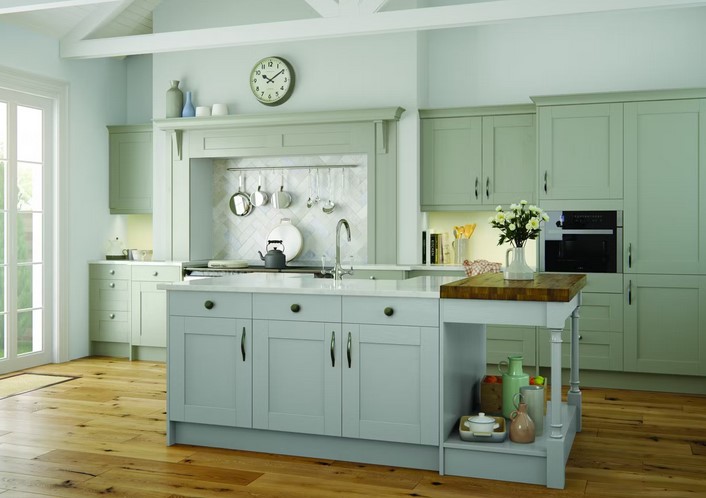
In modern kitchens, the freestanding kitchen island has emerged as one of the most versatile and stylish pieces of furniture. Serving as both a functional work area and a visual focal point, these islands offer a wealth of possibilities for those looking to enhance the design and utility of their kitchen space. Whether you’re looking for additional counter space, more storage, or a place to entertain guests, freestanding kitchen islands provide an array of benefits that can suit various needs. In this article, we will explore how these islands combine style and functionality to elevate your kitchen experience.
1. The Versatility of Freestanding Kitchen Islands
One of the main advantages of freestanding kitchen islands is their flexibility. Unlike built-in islands that are permanent fixtures, freestanding kitchen islands can be moved around to suit your needs and design preferences. This mobility makes them ideal for kitchens of all sizes, from compact apartments to large open-plan spaces. You can place them where you need the most counter space or move them for social gatherings and special occasions.
a) Multi-Purpose Use
Freestanding kitchen islands are not just limited to food preparation. They can serve a variety of functions, depending on your lifestyle. For instance, if you enjoy cooking, you can use the island as an additional surface for chopping, mixing, and plating. If you have a busy family, the island can double as a breakfast bar or a place for kids to do homework. On the other hand, if you love entertaining, the island can become a stylish buffet station or a place for guests to gather while you prepare meals.
Additionally, many freestanding kitchen islands come with built-in features such as shelving, drawers, and cabinets, which provide valuable storage. Whether you need to store kitchen gadgets, pots and pans, or cookbooks, a freestanding kitchen island can be a practical storage solution that doesn’t compromise on aesthetics.
b) Ideal for Open Concept Kitchens
Freestanding kitchen islands are especially beneficial in open-concept kitchens where space is abundant, but you want to define the cooking area without creating physical barriers. These islands act as both a functional workspace and a way to visually separate the kitchen from the dining or living area. They can also serve as a natural hub for social interaction, making the kitchen a more inviting space for family and guests.
2. Style and Design Considerations
When it comes to selecting a freestanding kitchen island, the design and style are key factors to consider. Since these islands often become the focal point of the kitchen, choosing one that complements the overall design of your space is essential. Fortunately, freestanding kitchen islands come in a wide range of materials, colors, and finishes, allowing you to find an option that fits your unique taste and décor.
a) Materials That Matter
Freestanding kitchen islands are available in various materials such as wood, metal, granite, and marble. Each material offers a distinct look and feel that can transform the atmosphere of your kitchen. For a rustic, farmhouse vibe, a wooden island can provide a warm, inviting aesthetic. On the other hand, if you prefer a more contemporary look, a metal or stainless-steel island can add a sleek, industrial touch to your kitchen.
Granite or marble countertops are ideal for those who appreciate luxury and durability. These materials are resistant to scratches and stains, making them perfect for frequent use. They also offer a timeless, elegant appearance that can increase the overall value of your kitchen.
b) Size and Shape
Freestanding kitchen islands come in a variety of shapes and sizes to suit different kitchen layouts. Whether you’re working with a small or large space, there’s an island that can fit perfectly into your kitchen. For smaller kitchens, compact islands with slim profiles can still offer ample storage and counter space without overwhelming the room. Larger kitchens, on the other hand, can accommodate more substantial islands that serve as a central workspace or gathering spot.
The shape of the island is another important consideration. While rectangular and square islands are the most common, circular or oval designs are also available for a more unique look. The shape you choose should complement your kitchen’s overall layout and flow. For example, if your kitchen has a lot of sharp angles, a round island can help soften the design and create a more harmonious space.
3. The Practical Benefits of Freestanding Kitchen Islands
Beyond their aesthetic appeal, freestanding kitchen islands offer a variety of practical benefits that make them a worthwhile investment. From improving kitchen efficiency to enhancing storage solutions, these islands are built with both style and function in mind.
a) Increased Counter Space
In many kitchens, counter space is limited, especially in smaller or older homes. A freestanding kitchen island can solve this issue by providing additional surface area for meal preparation, cooking, or entertaining. If you frequently entertain guests or cook large meals, having extra counter space can make your kitchen tasks easier and more enjoyable. You can also use the island as a staging area for plating dishes or setting up a buffet for parties.
b) Enhanced Storage Options
In addition to counter space, freestanding kitchen islands provide valuable storage. Many models come equipped with drawers, shelves, and cabinets, making it easier to organize kitchen essentials like utensils, spices, and pots. Some islands even feature pull-out trash or recycling bins, further increasing their functionality. Whether you need space for small kitchen appliances or a place to store extra dishes, a freestanding kitchen island helps keep your kitchen tidy and organized.
c) Creates a Social Hub
The open nature of freestanding kitchen islands makes them perfect for socializing. In many households, the kitchen is the heart of the home, and a freestanding island allows family members and guests to interact with the chef while meals are being prepared. Adding bar stools or chairs around the island creates a casual dining area, ideal for breakfast or informal meals. It’s a great way to encourage socializing in the kitchen while still providing ample workspace for cooking.
Freestanding kitchen islands offer a seamless blend of style and functionality, making them an ideal addition to any kitchen. From their versatility in design and function to the practical benefits they bring, these islands can transform your cooking space into an efficient and aesthetically pleasing area. Whether you’re looking to enhance your kitchen’s storage, increase counter space, or create a social gathering spot, a freestanding kitchen island is an excellent investment. By choosing the right design, materials, and features, you can incorporate a freestanding kitchen island that complements your home and elevates your kitchen to the next level.

